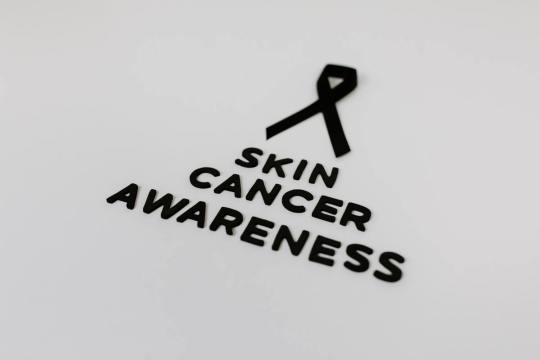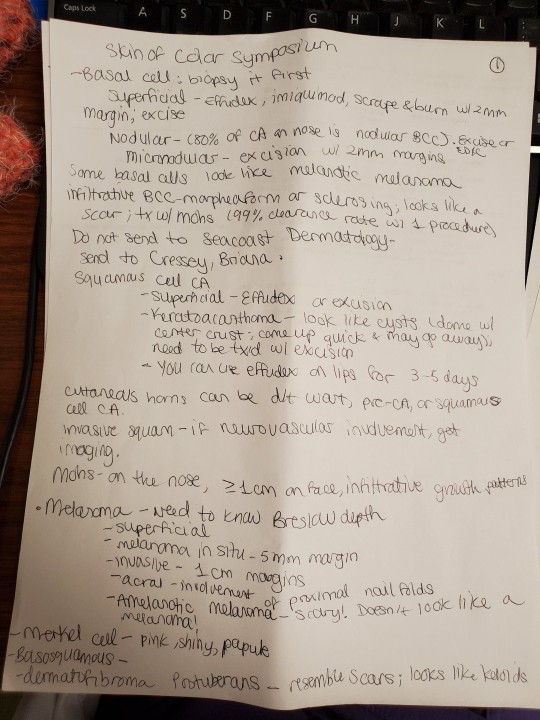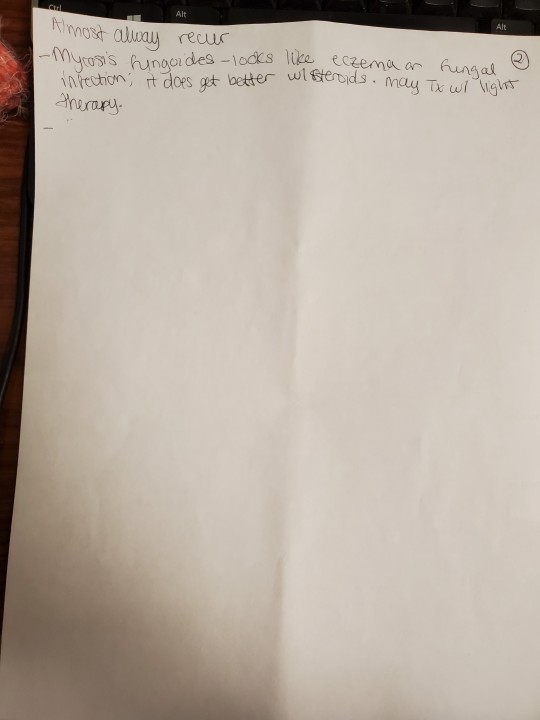#basal cell
Explore tagged Tumblr posts
Text
Basal cell carcinoma resection in an Ecuadorian patient with Gorlin-Goltz syndrome by Andrea Villarreal-Juris in Journal of Clinical Case Reports Medical Images and Health Sciences
Abstract
Gorlin-Goltz syndrome is an inherited dominant autosomal disorder characterized by a predisposition to numerous cancers. The clinical-pathological findings of this syndrome are very diverse. The objective of this report is to present an Ecuadorian patient with Gorlin-Goltz syndrome who underwent surgical resection of basal cell carcinoma compatible lesions.
Conclusion: Gorlin-Goltz syndrome encompasses a variety of clinical signs and symptoms, including important oral manifestations and skin lesions that must be recognized to achieve an early specialty referral, thus reducing the risk of malignancy through a multidisciplinary treatment.
Keywords: Basal Cell Nevus Syndrome, Gorlin-Goltz syndrome, Carcinoma, Basal Cell
Introduction
Gorlin-Goltz (G-G) syndrome or nevoid basal cell carcinoma syndrome (NBCCS) is a dominant autosomal genetic disorder with high penetrance. Fifty percent of patients who suffer from it have a mutation in the long arm of chromosome 9q22.3 in the area of the PTCH gene (protein patched homolog) (1–3), a homologue of the Drosophila patched gene (PTC), which encodes a transmembrane receptor protein (4). This protein binds to a soluble factor of the hedgehog family (Hh), thus activating the Smo (smoothened) receptor, which unblocks the transcription of several growth factors. Therefore, the PTCH gene is an oncosuppressor that is part of the Sonic Hedgehog Homolog (Shh) signaling pathway and is crucial in embryonic development, cell division control, and tumor growth (5).
Its approximate prevalence is 1 in 57000 to 1 in 256000 and the ratio of males to females is 1:1 (6). Binkley and Johnson reported this syndrome for the first time in 1951 (7), then, in 1960, Gorlin and Goltz described the association between multiple basal cell carcinoma, odontogenic keratocysts (OKC) and bifid ribs, which account for the characteristic triad (8). In 1977, Rayner et al. added additional features, including calcification of the falx cerebri and palmar/plantar fossae (9).
According to the criteria of Kimonis et al., the diagnosis of G-G syndrome requires the coexistence of at least two major criteria or one major and two minor (10).
The characteristic that is usually diagnosed first is OKC, because it can be detected during the first decade of life and appears in almost 80% of G-G syndromes.
Other manifestations include palmar and plantar ulcers that appear as shallow pits, caused by partial or complete absence of the corneal layer, which can also appear along the sides of the hands and fingers and even on the tongue; spina bifida (10,11); medulloblastoma (can be an epiphenomenon of G-G, especially in children who are ≤5years-old) (12); cardiac tumors, including fibromas and ventricular histiocytomas, usually congenital (13); hypertelorism, congenital cataract, nystagmus, coloboma and strabismus (14); and ameloblastoma (extremely rare) (15,16).
Early diagnosis of G-G syndrome and its subsequent treatment are very important due to neoplasm susceptibility (2).
The case of a patient with a previous diagnosis of Gorlin-Goltz syndrome who presented multiple lesions compatible with basal cell carcinoma is presented below.
Case Report
A 35-year-old male, living in Quito, Ecuador, without allergies; no history of tobacco or alcohol intake. His mother and his brother presented Gorlin-Goltz syndrome (G-G).
The patient presents hereditary and congenital G-G syndrome (multifocal basal cell carcinoma and maxillary keratocysts), whose manifestations began at the age of 22. He underwent surgery for bilateral keratocysts at the age of 25, and multiple biopsies of the upper left eyelid were taken since 2012. In August 2015, with a positive tumoral activity biopsy report, a wide resection involving 60% of the left upper eyelid plus flap reconstruction was performed.
Physical examination revealed multiple surgical scars on the left upper eyelid with tumoral activity on the eyelid margin, as well as on the outer third of the ipsilateral lower eyelid and on the right side.
In October, a wide resection of the left upper and lower eyelid was planned, plus reconstruction and transoperative study, which are performed without complications.
Subsequently, the patient attended scheduled control, reporting the presence of a left superciliary nodular lesion. Physical examination revealed multiple lesions located in the left superciliary region, left helix, concha, and antihelix, in the inner corner of the left lower eyelid, in the left parieto-temporal and occipito-temporal regions, and other small bilateral genian lesions. There were no alterations in the flap. Left external campimetry was limited. It was decided to perform a facial bone and skull simple and contrasted tomography (CT) and laboratory tests.
Then, resection of the previously mentioned lesions and resection of the lower eyelid with transoperative study, shield-type incision and external canthoplasty of the lower left eyelid was planned. A plastic surgeon was included in the surgical team.
Altogether, 9 skin lesions located in the left superciliary, left frontal, interparietooccipital, posterior occipital, auricular, and left retroauricular regions were resected, which were positive for basal cell carcinoma.
In the subsequent control, the patient's campimetry showed improvement.
DISCUSSION
Reports about Gorlin-Goltz syndrome are scarce in the literature (17). The rarity and phenotypic variability of this syndrome causes a delay in its diagnosis. Syndromicassociated keratocystic odontogenic tumors are often treated in the same way as nonsyndromic cases (18) and associated systemic signs can easily be missed due to lack of understanding of the syndrome. In addition, their characteristics vary globally, so doctors and even dentists must identify them in a timely manner, considering those that are more prevalent in their population or similar populations (19,20).
The pathogenesis of basal cell carcinoma (BCC) is thought to involve increased sensitivity to ultraviolet light and to involve ineffective mechanisms that repair UVinduced DNA damage. In any case, this theory is not accepted by all authors since these lesions can also appear in areas that have not been exposed to sunlight. Especially in children, patients with G-G syndrome who undergo radiotherapy for other cancers have shown to be at increased risk of radiation-induced BCC (21).
In 50% of patients with G-G syndrome, jaw keratocysts appear, characterized by a thin surrounding layer of epithelial cells, which tend to reappear locally after excision in 6 to 60% of cases, therefore, the indication for surgery should be carefully considered, also due to the possibility of intensive clinical and instrumental monitoring (22).
In recent years, new drugs have been developed to inhibit certain components of the sonic hedgehog signaling pathway. In 2013, the FDA approved vismodegib, the first small molecule to target this pathway (11). Although these agents seem promising options for patients with G-G syndrome, their efficacy is limited by adverse effects and the development of resistance (23). Logically, a more aggressive approach is necessary if basal cell carcinoma is suspected; subsequently, depending on the lesion site and the surgery type, a reconstruction can be performed, as in the case presented in this article (24,25).
CONCLUSION
Gorlin-Goltz syndrome encompasses a variety of clinical signs and symptoms, including important oral manifestations and skin lesions that must be recognized to achieve early referral to a specialty, thus reducing the risk of malignancy through multidisciplinary treatment.
Ethical responsibilities
In this case report, the informed consent of the patient was obtained. Its elaboration and all the inherent details were based on the Declaration of Helsinki.
#Basal Cell Nevus Syndrome#Gorlin-Goltz syndrome#Carcinoma#Basal Cell#JCRMHS#Clinical decision making#Clinical Images journal
1 note
·
View note
Text
Scar Protocol
“Do the best you can until you know better. Then, when you know better, do better.”Maya Angelou When I first started using essential oils over twenty years ago it was all about the smell for me. I loved the way that they blended together to make a custom perfume or to use in yoga classes. It wasn’t until many years later that I actually started to learn that the powerful molecules in plants are…

View On WordPress
#basal cell#choice#doterra#Essential Oils#health#healthy#healthy living#healthy skin#skin#skin cancer#wellness
0 notes
Text
The Sunscreen Solution: A Guide to Beating Basal Cell Carcinoma
As a family medicine physician, I often encounter patients with different skin conditions. One of the most common types of skin cancer is basal cell carcinoma. In this post, we will discuss the key points that you need to know about this condition. What is Basal Cell Carcinoma? Basal cell carcinoma (BCC) is a type of skin cancer that arises from the basal cells, which are located in the lower…

View On WordPress
0 notes
Text
These differences in cytoplasmic density are captured when the zygote divides asymmetrically to give a short, cytoplasmically dense apical cell and a longer, vacuolated basal cell (see Figures 17.3A and 17.5). (...) Nearly the entire embryo, and ultimately the mature plant, is derived from the smaller apical cell, which first undergoes two longitudinal divisions, then a set of transverse divisions (producing new cell walls at right angles to the apical-basal axis) to generate the eight-cell (octant) globular embryo (see Figures 17.3C and 17.5).




"Plant Physiology and Development" int'l 6e - Taiz, L., Zeiger, E., Møller, I.M., Murphy, A.
#book quotes#plant physiology and development#nonfiction#textbook#apical cell#basal cell#plant cells#cell division#octant#embryo
0 notes
Text
dude i have to wake up in 6 hours and im really tired but i have homework due in 9 hours that i know i will not wake up early enough to do so i have to do it right now
#pain of a college student#man i did not miss these sleepless nights#staring at the layers of epithelial cells and forgetting the difference between stratified and basal again#this bird speaks#this bird studies
12 notes
·
View notes
Text
modern medicine is weird bc they can just numb your face to cut cancer out of it and then send you on your way
#i KNOW you're doing something there but i can't FEEL it#face kind hurts now but tbh for them like cutting a hole in it it's not bad#(I got some Mohs done today for a small spot of basal cells i'm Good)
12 notes
·
View notes
Text
Might have skin cancer. Whatever
#mole on the back of my neck is ouchie for some reason + family history of basal cell carcinoma#sad if true I think it’s a very cute mole placement 💔#also would be annoying fucking spot to have to care for post removal.#ughhhgughgugh I can probably wrangle a dermatologist appt before the end of the year ig 🙄
3 notes
·
View notes
Text
My mom got on the phone with my cousin and told him something horrible happened and I thought she was going to tell him she has a basal cell carcinoma (she should be fine fwiw) and she told him they're closing her cycling race streaming app
4 notes
·
View notes
Text
diabetes tech is so annoying sometimes like dont get me wrong i love my dexcom & my tslim and im very very thankful that i have them and i understand its a privilege to have access to advanced medical technology
but a lot of the built-in “safeguards” are really annoying and frankly unnecessary for most adults. why is my ability to make my own medical decisions being infringed upon by the manufacturers of the devices that are supposed to be assisting us in our care? why can’t i override or change certain settings if i acknowledge the risk associated with that choice?
#why does dexcom put banners i have to swipe away on top of my maps while i drive even though i have it set to temporary banners only?#why does my tslim have an alarm i can’t turn off that overrides my vibrate setting that goes off every 5 minutes at an extremely loud volume#when my cartridge is empty?#im an adult if i determine it is not urgent to refill my cartridge i shouldnt be punished with alerts i cannot snooze for more than 5 mins.#all of my alerts are set to vibrate only. this one is apparently not affected by that setting. it goes off every 5 minutes.#my blood sugar has been low enough for the past hour that my basal would be automatically set to 0 if there was insulin in my pump 🙄🙄🙄#also its wasteful for me to change my cartridge before its empty? its expensive given the cost of insulin and pump supplies?#like i understand it’s probably to protect the company from liability and litigation if someone doesnt refill their cartridge and goes into#DKA and/or dies but as an adult i should at least have the option to snooze it for more than 5 minutes or have it set to vibrate only when#im not asleep or something?????#what if i have a work meeting and ran out of time to change it beforehand??? is my only option to turn off my pump completely until i can#refill it?#what if i was in an earthquake and my cell phone died and my reservoir was empty but i still wanted to use my pump as a dexcom reciever?#do i and everyone around me during an emergency just have to suffer?#what about school shootings. or any situation where someone needs to hide from a dangerous person?#its just inconsiderate of the REALITY of the fact that people with diabetes live real lives that dont 1000000% revolve exclusively around#their diabetes every minute of every day until we die#its condescending and paternalistic and frankly doesnt prevent harm from befalling us.
7 notes
·
View notes
Text
this is so eerie and compelling. BUT.
please fucking wear sunscreen and stop acting like it's just some silly frivolous overconsumption-related skincare trend
it is not just necessary because "you did too much to your skin and now you can't handle the sun"
it's a skin cancer preventative
it can be $3 sunscreen from Walmart in a massive Value Bottle but please do wear it
(also silk bonnets or pillowcases are very useful for people with curly, kinky, or very fine hair. they're especially popular among Black women and they do serve a real purpose)
Google is free and your experiences are not universal
#pooh-poohing sunscreen is just irresponsible and spreading misinformation#it's not that the sun will ~*make you look older oh no!!!*~#it's my mother having most of her upper lip literally gouged off her face (and reconstructed) to get rid of basal cell carcinoma#and that's not even the first thing she's had removed in her life#just the first one on her face#do you want that? no? wear the damn sunscreen
2K notes
·
View notes
Text
"This post is about when I learned I had skin cancer. It was originally published on 08/23/2016. It has been slightly altered to remove the images, add some punctuation, and some wording has been updated for clarification. I did not change the tense of it, which you will notice most towards the end."
CW: skin cancer, dermatologist
#The Overstimulated#Substack#Personal Blog#Personal Experience#personal health#Disabled Writer#Disability#Disabled Experience#Disabled Blogger#chronically ill#chronic pain#chronically ill community#chronic illness#chronically ill blogger#Medical#Medical Trauma#Medical Experience#medical imaging#skin cancer#basal cell carcinoma#dermatologist
1 note
·
View note
Text
#Skin diseases#Skin disorders#Common skin conditions#Types of skin diseases#Chronic skin conditions#Skin rash treatment#Skin condition symptoms#Skin disease causes#Treatment for skin diseases#Skin health#Specific Skin Diseases:#Acne#Psoriasis#Eczema#Rosacea#Melasma#Vitiligo#Fungal skin infection#Ringworm#Dermatitis#Hives#Seborrheic dermatitis#Shingles (Herpes Zoster)#Lupus (Skin lupus)#Warts#Cold sores#Actinic keratosis#Basal cell carcinoma (BCC)#Squamous cell carcinoma (SCC)#Skin cancer
1 note
·
View note
Text
Five stages, each of which is linked to the shape of the embryo, are widely recognized:
Zygotic stage. The first stage of the diploid life cycle commences with the fusion of the haploid egg and sperm to form the single-celled zygote. Polarized growth of this cell, followed by an asymmetric transverse division, gives rise to a small apical cell and an elongated basal cell (Figure 17.3A).
Globular stage. The apical cell undergoes a series of divisions (Figure 17.3B-D) to generate a spherical, eight-cell (octant) globular embryo exhibiting radial symmetry (see Figure 17.3C). Additional cell divisions increase the number of cells in the globular embryo (see Figure 17.3D) and create the outer layer, the protoderm, which later becomes the epidermis.
Heart stage. Focused cell division in two regions occurs in either side of the future shoot apical meristem to form the two cotyledons, giving the embryo bilateral symmetry (Figure 17.3E and F).
Torpedo stage. Cell elongation and cellular differentiation processes occur throughout the embryonic axis. Visible distinctions between the adaxial and abaxial tissues of the cotyledons become apparent (Figure 17.3G).
Mature stage. Toward the end of embryogenesis, the embryo and seed lose water and become metabolically inactive as they ever dormancy. Storage compounds accumulate in the cells at the mature stage (Figure 17.3H).


"Plant Physiology and Development" int'l 6e - Taiz, L., Zeiger, E., Møller, I.M., Murphy, A.
#book quotes#plant physiology and development#nonfiction#textbook#plant cells#apical cell#basal cell#protoderm#cotyledon#shoot apex#root apex#cell division#cell differentiation
0 notes
Text
Itraconazole and Vismodegib Combination for Basal Cell Carcinoma
Itraconazole and Vismodegib Combination for Basal Cell Carcinoma by Jeffrey Dach MD The three most common skin cancers are squamous cell, basal cell and melanoma. Squamous cell and basal cell cancers are very curable when excized by the local dermatologist. If the patient either declines surgical excision, or is not a good surgical candidate, then medical treatment is the next option. In this…
0 notes
Text


Basal Cell Carcinoma skin surgery.
0 notes

